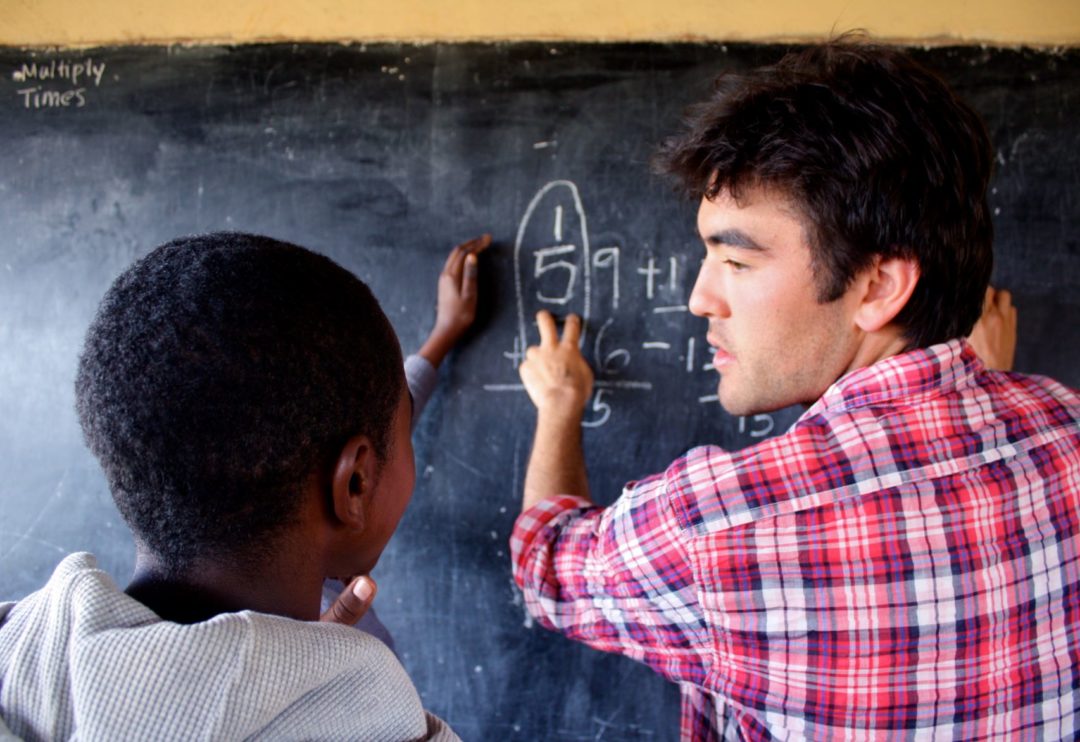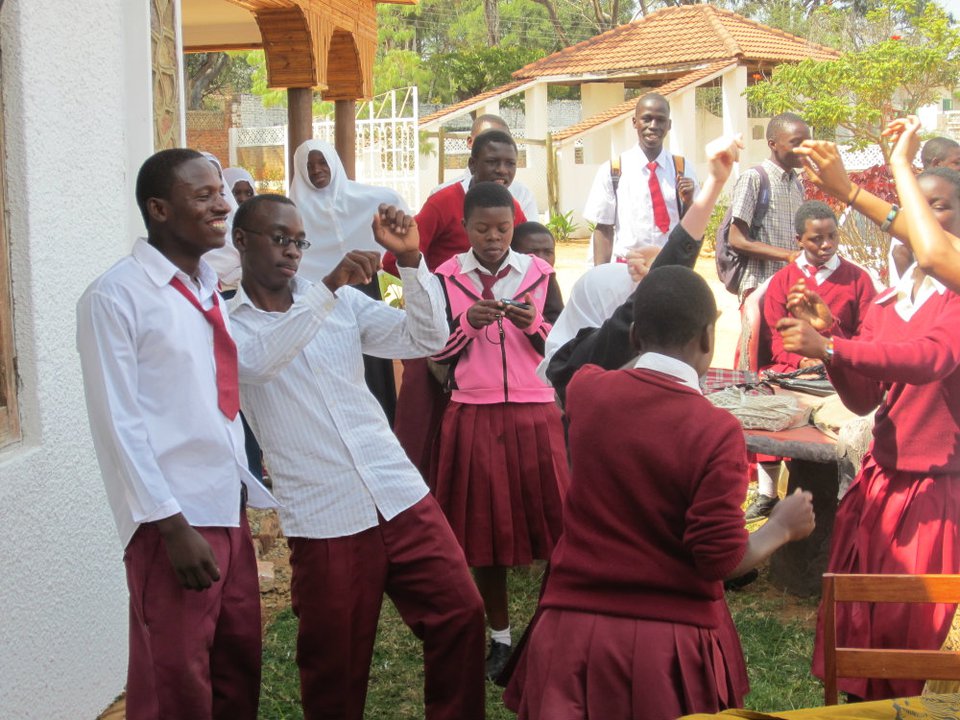FEATURED GRANTEE: The School Fund
Categorized as: Stories on March 24, 2011.

Read what’s so different about this online crowd-funder for education that they became our newest partner, just weeks after incorporating.
“If you have education you get a good life.” – John Medo, Tanzania
Mission: The School Fund wants to help build a world where any student, no matter where they are born, has the opportunity to attend school; and any school, no matter where it is built, has the opportunity to offer students a full range of engaging learning experiences.
Equal opportunity for students around the world.
This is how they plan to get there:
- Fund students: Primary school may be free, but secondary school in most developing countries costs an average U.S. $150/year—which hundreds of thousands of bright young people cannot afford. The School Fund has created a person-2-person funding website that displays student information, school-fee receipts, and student/sponsor correspondence—all up front, no hidden costs or agenda. (They fundraise separately for administrative expenses.)
- Fund schools: U.S. high schools can adopt schools in developing countries to raise money needed to repair a roof, build a latrine, or purchase lab supplies, computers, sewing machines, or sporting equipment—all the rich learning resources that school fees can’t buy.
- Create a network of care: The School Fund links individuals, nonprofits, businesses, and schools, using their funding platform for holistic transformation beyond just building schools and donating student fees—developing curricula around new learning materials such as musical instruments, computer labs, and art supplies; and bringing in such resources as pencils, paper, and solar lighting.
- Connect people: Using the power of the internet, The School Fund connects people around the world so that students, teachers, and families in developing countries can form lasting, enriching friendships with their online sponsors.

“Education is the most important inheritance that children should be given. They say, ‘If you educate a woman, you have educated a society.’ My father died before I completed primary school—so now I have the community to help me get this precious asset.” – Ezenia Ntiba, Tanzania
History: The School Fund began with friendship. Two American guys who had just graduated from high school in California traveled with their families on safari in East Africa. They met a young boy outside their hotel who was cutting grass to feed his family’s cow. The boy, covered in the red dust of northern rural Tanzania, wore a tattered school uniform. Speaking a little broken English, John Medo invited them to visit his home, where he lived with his mother and father, 3 siblings and 2 grandfathers, on $45/month. He told them that he wanted to be president of his country someday, but he could not afford the $150 in fees to attend high school. Matt and his family raised the funds for John’s school fees before the end of that vacation—and Matt promised to return to help John and students like him, who needed such a small amount of support, to build their future.
Sure enough, Matt returned. For 3 years he begged and borrowed the money for John’s fees and did research on education in the developing world, while himself a full-time college student. He convinced his parents to allow him to return to Tanzania each summer, building:
- a base of students to sponsor,
- a team of all-volunteer U.S. college students to run his nonprofit,
- and a system of criteria for student and school selection as well as clear online transparency.
Matt had a vision for a platform that allowed funders to track every dollar they gave, to find a student that might have something in common with (whether a shared hobby or career aspiration), and allow funders and students to communicate with one another, thereby facilitating meaningful relationships. He designed this platform and roped his software-engineer dad into designing the website that could openly connect students and their current fees and future goals with individual sponsors who chose to support them.
Last summer, four members of the nascent organization—Matt and Andrew, along with Roxana Moussavian and Sandra Hartkopf, began crafting partnerships with schools and NGOs in East Africa.
By December 2010, The School Fund became a legal nonprofit (a 501 (c) 3) in December and hired its first in-country supervisor. Having sponsored their first student, John Medo, all the way through high school, The School Fund founders are now seniors in college. Their all-volunteer team has expanded to 22 administrators and advisors, with a network of student clubs across the U.S., serving high schools in 11 countries.
Impact:
From a single friendship to global ambition:
- 1 student in 2007, sponsored with private donations
- 86 students in 2010
- 200 students in 2011
- 200,000+ students in the next couple of years
- reach entire global market of secondary students who need help with modest fees.
Currently, The School Fund serves about 200 students through 13 school partners in 11 developing countries:
- Ethiopia
- Haiti
- India
- Kenya
- Madagascar
- Malawi
- Panama
- Sierra Leone
- Tanzania
- Uganda
- Zimbabwe
Real-time online communication with your student.
Here is Matt Severson, about to graduate from Brown University in Providence, Rhode Island, talking to John Medo, the 18-year-old boy who was the first sponsored student of The School Fund and now about to graduate from Ganako Secondary School in Karatu, Tanzania:

Matt Severson: Mon, December 27, 2010 at 5:35 am GMT: Hi Johnny! What did you do for your christmas? I was skiing with my friend Alex! Do you know what skiing is? It was lots of fun. Promise me you’ll study hard so you can go to a good A-Level school next year, okay?
Say hi to your family for me.

John Medo: Sat, January 29 at 5:13 pm GMT: hi Matt i miss you so much also i will still promise you that i will study hard please pray for me. also i want to remind you that its now five year of our friendship, relationship, partnership. what are we going to do after you come? say hi to all and you family bye brother.
Programs:
Students are selected based on three criteria:
- Financial Need. Student is unable to continue school without financial assistance.
- Academic Performance. Student must have performed well in primary school, preferably in the top 25% of their class, and continue to perform well in secondary school.
- Attendance. Student must have a record of extremely good attendance. This is a simple metric to gauge a student’s determination in pursuing an education.
These students tend to be young people with big dreams, passion for learning, respect for teachers and peers, and a solid history of good attendance and excellent grades.
The School Fund turns a simple action—one person helping a student go to school—into a platform to give countless others the chance to support and befriend a student in another part of the world.
Our connection: The Skees Family Foundation met The School Fund just weeks after they had obtained their nonprofit status, and we felt certain we had found a partner with a fresh solution to education inequity. Not only does their online platform offer a unique combination of educational fundraising, social connectivity, and donor-donation accounting—their approach is unique, too. The all-volunteer staff of The School Fund, all fulltime college students themselves, work hard to create opportunity for kids just as bright and talented as they are, but born into impoverished communities.
The School Fund already has shown us their relentless energy and ambition to build their program to scale until all the world’s students get a fair shot at learning. We serve as an advisor for their programming and administration, and have teamed up with The School Fund on a communications project this summer (2011) to share the success of their program on the ground in East Africa. Stay tuned for stories of students at work. . .
What do you get when you raise the educational level of a nation’s population?
- better health
- lower birth rates
- increased gender equality
- higher life expectancy
- higher per capita income
- higher country GDP
- increased national security
- increased global security
SUBSCRIBE! Like what you see? Click here to subscribe to Seeds of Hope!

